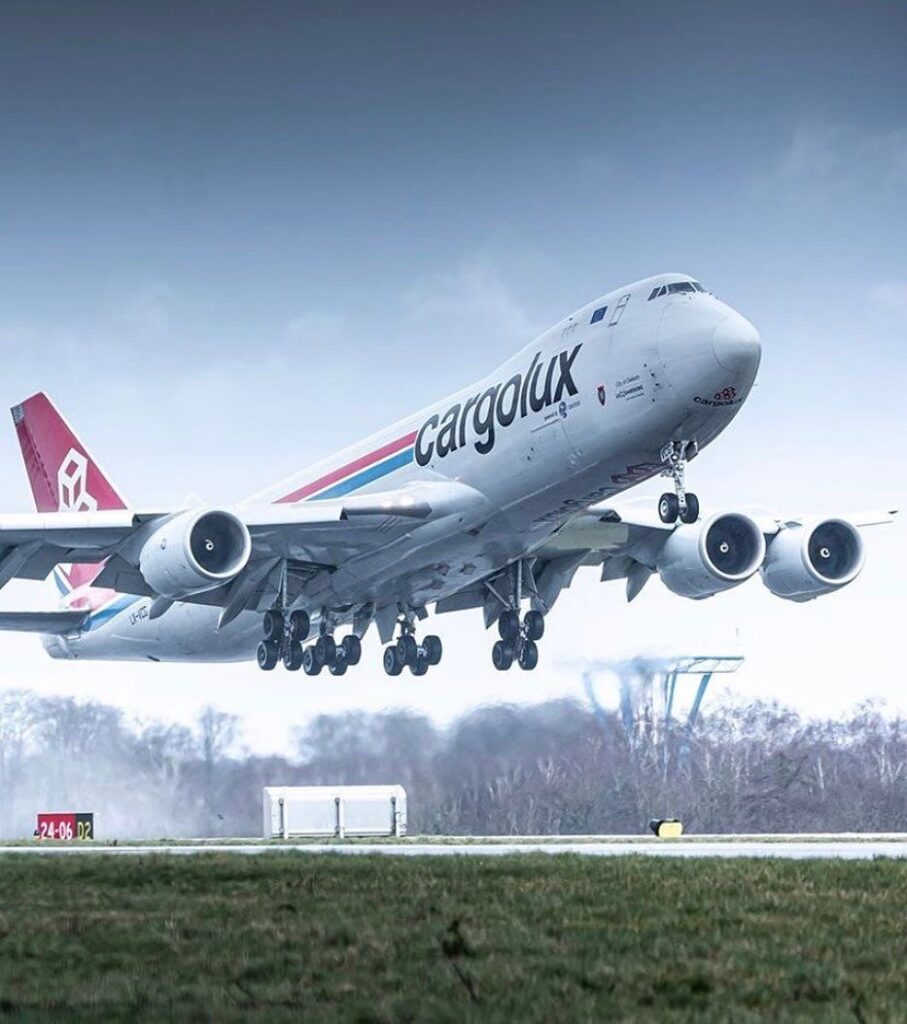
The 747-8F was developed in response to the growing demand for long-range, high-capacity air freight transport. With a maximum takeoff weight of around 987,000 pounds (447,700 kilograms), it is the largest and heaviest commercial freighter ever built in the United States. Its cargo capacity is one of its main strengths—it can carry approximately 140 metric tons (about 307,000 pounds) of cargo over a range of 4,120 nautical miles. This allows airlines and logistics companies to move large amounts of freight efficiently between major global hubs.
One of the most distinctive features of the 747-8F is its extended fuselage, which measures 250 feet, 2 inches—making it the longest cargo aircraft in operation. This extra length, compared to the earlier 747-400F, allows for 16 percent more cargo volume. The aircraft can accommodate up to 34 pallets on its main deck and 14 on the lower deck, providing flexibility for a wide range of cargo types, including oversized and outsize freight. Its nose door, a hallmark of the 747 freighters, allows for easy loading of large or irregularly shaped items that wouldn’t fit through standard side doors.
Boeing equipped the 747-8F with advanced technologies derived from the 787 Dreamliner program. The aircraft’s wings feature raked wingtips and advanced aerodynamics that reduce drag and improve fuel efficiency. Power comes from four General Electric GEnx-2B67 engines, which are quieter and more efficient than their predecessors. These engines contribute to a 16 percent improvement in fuel efficiency and a 30 percent reduction in noise footprint compared to the older 747-400F.
In the cargo market, efficiency is critical, and the 747-8F has proven itself a valuable asset to operators such as Cargolux, Atlas Air, Korean Air Cargo, and UPS. Its ability to carry both high-volume and high-weight loads across long distances makes it particularly suited for intercontinental routes. The aircraft can transport a wide variety of goods—from consumer products and automotive parts to medical supplies and heavy industrial equipment.
Despite newer twin-engine freighters like the Boeing 777F offering lower operating costs, the 747-8F maintains a vital niche due to its unmatched payload capacity and front-loading capability. In fact, as passenger versions of the 747 retire from service, the freighter variant continues to thrive. It remains a backbone of global air cargo operations, especially for carriers needing to move outsized freight that other aircraft cannot accommodate.
The Boeing 747-8F stands as a fitting culmination of more than five decades of 747 innovation. Combining massive capacity, range, and efficiency, it continues to serve as a workhorse of international air freight, ensuring the “Queen of the Skies” remains an enduring icon in aviation history.


